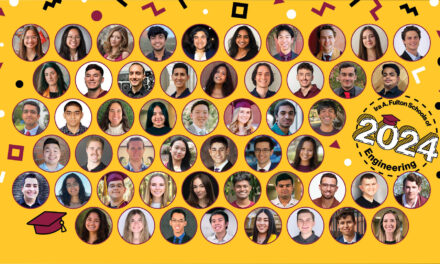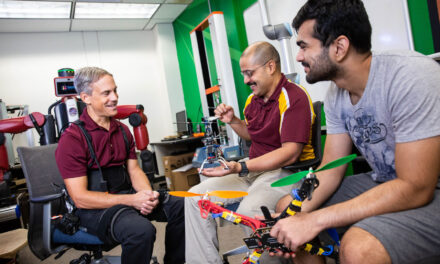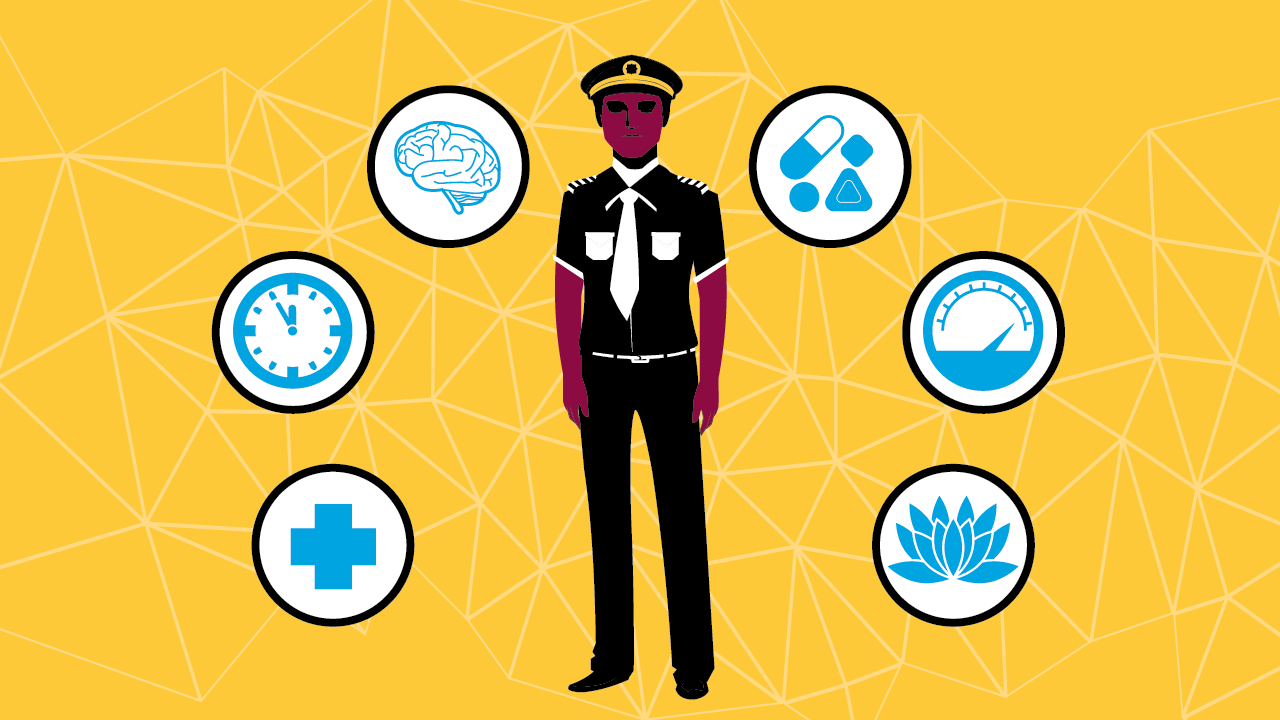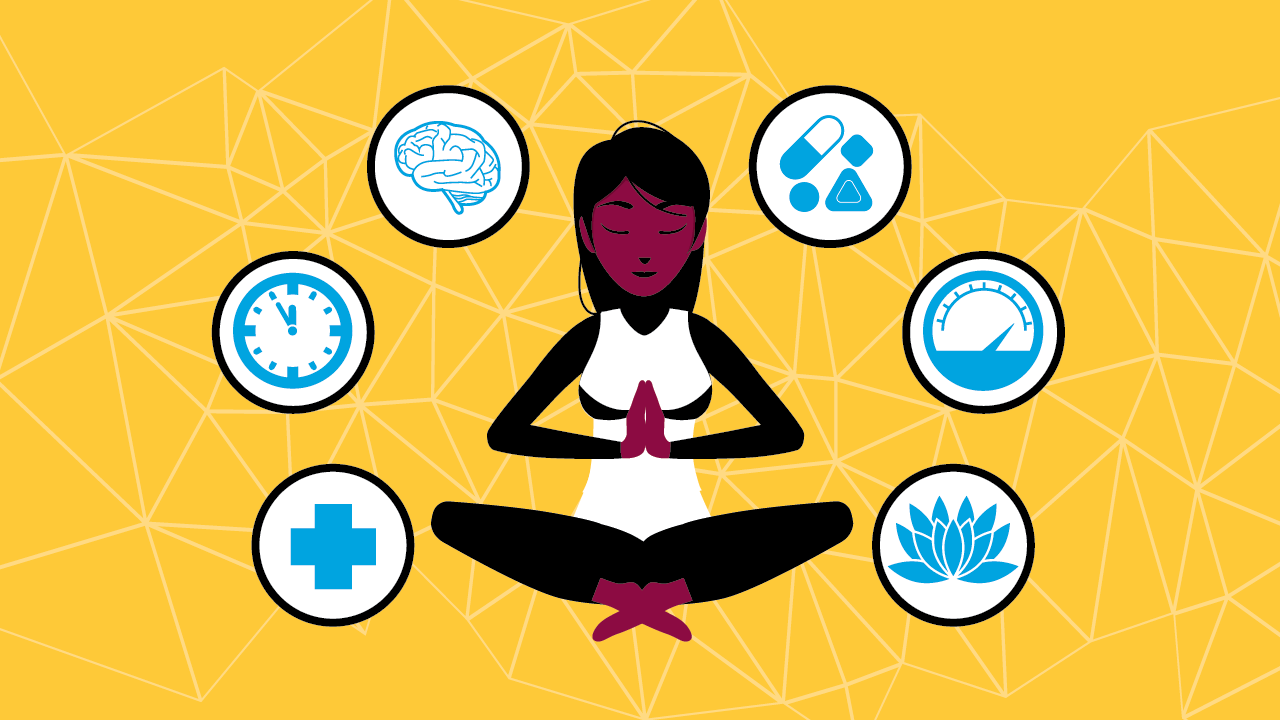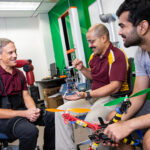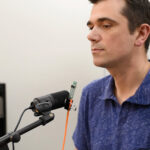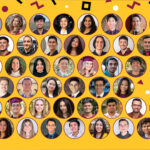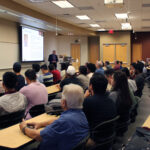
From a bundle of nerves to centered calm: Curiosity to creation
A device developed by Arizona State University research-based startup Hoolest Performance Technologies is relieving anxiety by using neuromodulation technology designed to enhance human performance
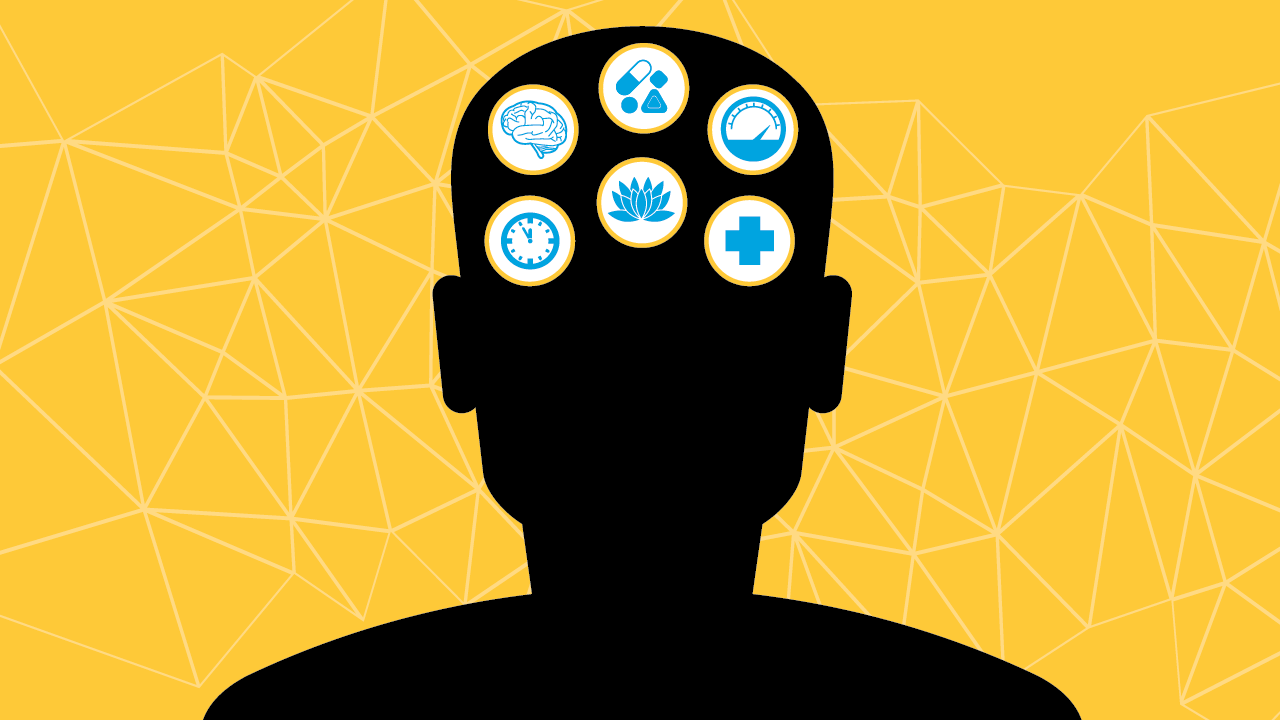
Above: Nick Hool, a biomedical engineering doctoral alumnus from the Ira A. Fulton Schools of Engineering at Arizona State University, is helping people in the Phoenix area with a drug-free, anxiety-relief investigational device developed by his startup, Hoolest Performance Technologies. Graphic by Rhonda Hitchcock-Mast/ASU
Preparing to give a big presentation. Starting on an important work project. Fighting through the distress of overcoming addiction. Living with the intrusive thoughts from a traumatic past. Facing the unknowns of a dangerous, new virus and an uncertain future.
What do these circumstances have in common? They all induce anxiety.
Anxiety comes from a range of stressors that vary from person to person and can affect your ability to get through the day.
Arizona State University alumnus Nick Hool wants to help — and so far has helped people in the Phoenix area using a drug-free, anxiety-relief investigational device developed by his neuroscience-research-based startup, Hoolest Performance Technologies.
Anxiety disorders affect nearly one in five people in the U.S. and are the most common mental illness. In 2020, the COVID-19 pandemic has people experiencing anxiety more than ever.
Prescription drugs like selective serotonin reuptake inhibitors, including Prozac, or benzodiazepines, such as Xanax, have been the most popular anxiety treatment for decades. While effective, medications come with a long list of negative side effects. Forms of psychotherapy like cognitive behavioral therapy have also become increasingly popular, but these methods can be expensive and sessions with a therapist are often not available on demand.
Mindfulness and meditation are also becoming more and more popular, and apps like Calm and Headspace have dominated the self-care mobile app space since 2019. These practices are also recommended by health care professionals at the Mayo Clinic and the U.S. Department of Veterans Affairs.
These are helpful solutions for many, but the time and active focus required to experience their benefits can be difficult for some to master. So, Hool set out to create a different approach.
As a competitive golfer in high school, Hool also experienced anxiety growing up. He was even prescribed medication for a time in high school, but experienced undesired side effects. This sparked his interest in exploring the physiological side of stress using biomedical engineering.
With the development of functional magnetic resonance imaging and other brain imaging technologies, scientists have been able to gain a better understanding of neurotransmitters (the brain’s chemical couriers) and chemicals like serotonin and dopamine that play a role in anxiety disorders.
These technologies have also helped to study the effects of activating major components of the autonomic nervous system, which unconsciously control and regulate various bodily functions. Promising results in treatment of anxiety and stress have been made by stimulating one nerve in particular: the vagus nerve.
Hool’s graduate research in the Ira A. Fulton Schools of Engineering at ASU focused on noninvasive vagus nerve stimulation and its role in quelling anxiety.
The vagus nerve controls the body’s natural relaxation mechanism, called the parasympathetic response. It triggers a feeling that’s the opposite of the tense, fight-or-flight reaction people often have in stressful situations. Instead, activating the vagus nerve naturally slows the heart rate, lowers blood pressure and helps relax muscle tension.
The vagus nerve can be stimulated noninvasively through electrode contact on the skin above the nerve as it runs up the neck, past the ear and into the brain.
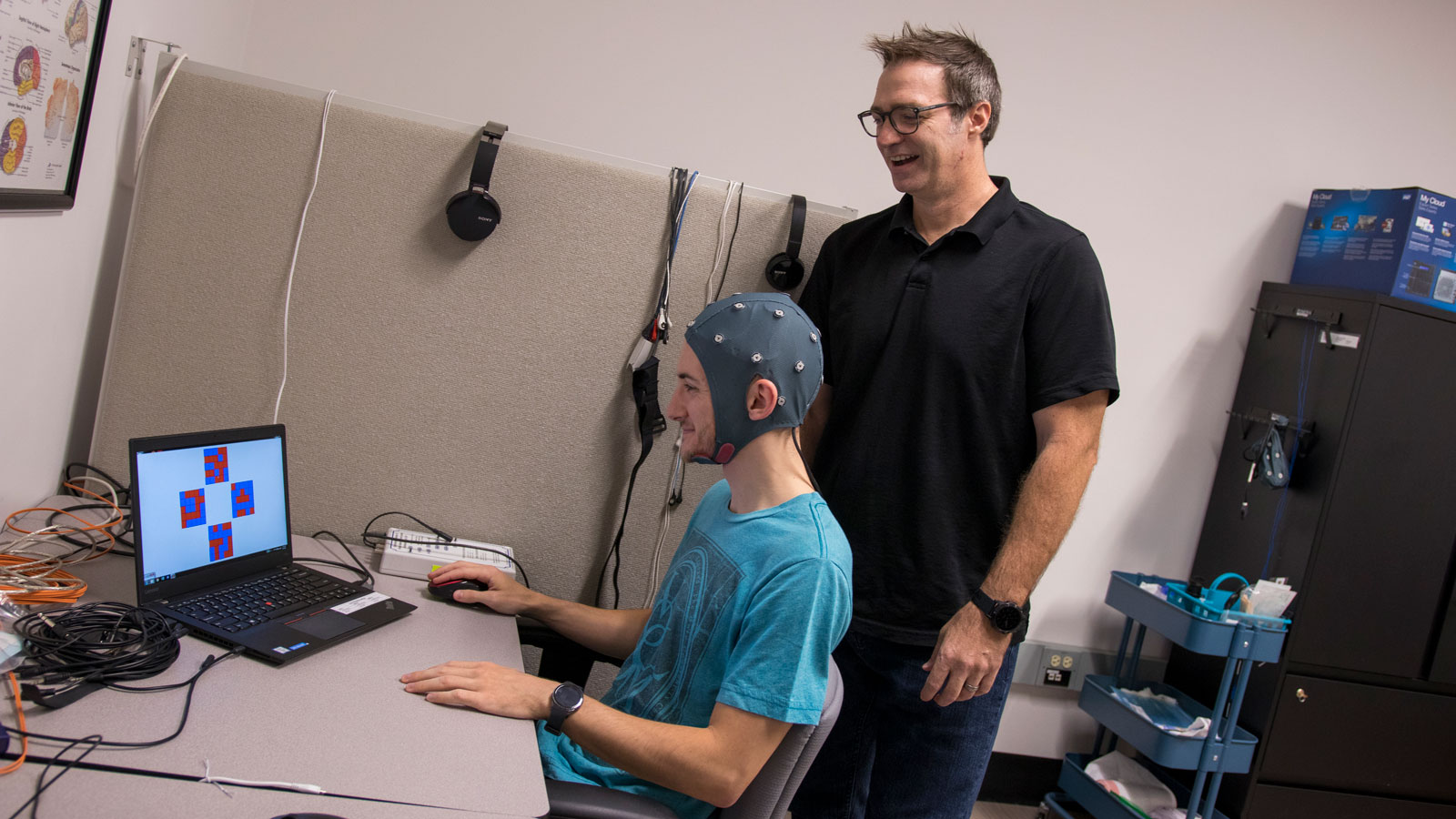
Associate Professor William “Jamie” Tyler (standing) works with a student in the Tyler Neurotechnology Lab. Tyler, co-founder of startup IST and founding director of the WearTech Applied Research Center in Phoenix, created an entrepreneurship-focused doctoral degree program for Nick Hool (not pictured) to help him learn skills needed to be a successful entrepreneur and a proficient engineer with expertise in neuromodulation and biomedical engineering. Photographer: Marco-Alexis Chaira/ASU
It was this mechanism that became the focus when Hool started his company. He sought out neural engineering expert and Fulton Schools Associate Professor William “Jamie” Tyler to work in the Tyler Neurotechnology Lab and learn the neuromodulation ropes.
Tyler, co-founder of neuromodulation startup IST, ended up designing a unique doctoral program for Hool, whom he believed had the “qualities and characteristics to take an idea and turn it into something impactful.”
Using his experiences as a neurotechnology entrepreneur, Tyler coached Hool on a successful strategy for building a company. So, in addition to conducting research and writing journal articles and a dissertation like a typical doctoral student, Hool also completed the steps for creating an entrepreneurial venture, filing patents and securing investors.
“Nick has done everything right,” Tyler says. “He listened, responded, adapted. What’s next for him is exciting.”
The result of Hool’s work was the development of a noninvasive vagal nerve stimulation, or nVNS, device that uses small electrical impulses to activate branches of the vagus nerve in and around the ear. The nVNS device can directly activate the body’s parasympathetic response and the regions of the brain associated with producing chemicals that affect anxiety and other mental conditions.

Hoolest co-founders (left to right) John Patterson, Sami Mian and Nick Hool pitch their startup at the 2018 Arizona State University Innovation Open competition. Hoolest won first place and $100,000 in seed funding at the competition. Photographer: Marco-Alexis Chaira/ASU
Hool teamed up with two other ASU engineering students at the time, John Patterson and Sami Mian, to found Hoolest in May 2017. They earned early success, winning the 2018 ASU Innovation Open and earning $100,000 in seed funding.
Since then, he and his small team have continued developing the technology as an impactful wearable medical technology startup. Hoolest became one of the first ventures invited to become part of the WearTech Applied Research Center, Phoenix’s wearable technology hub, for which Tyler was the founding director.
Now that Hool has graduated with his doctoral degree, entrepreneurial and technology development with Hoolest has been his main focus.
Hoolest’s nVNS device is not yet available to the public, but the company has been investigating the effects of the device in clinical studies over the past year. Several individuals have been able to take home prototypes to help Hool and his team actively investigate the effects of the device.
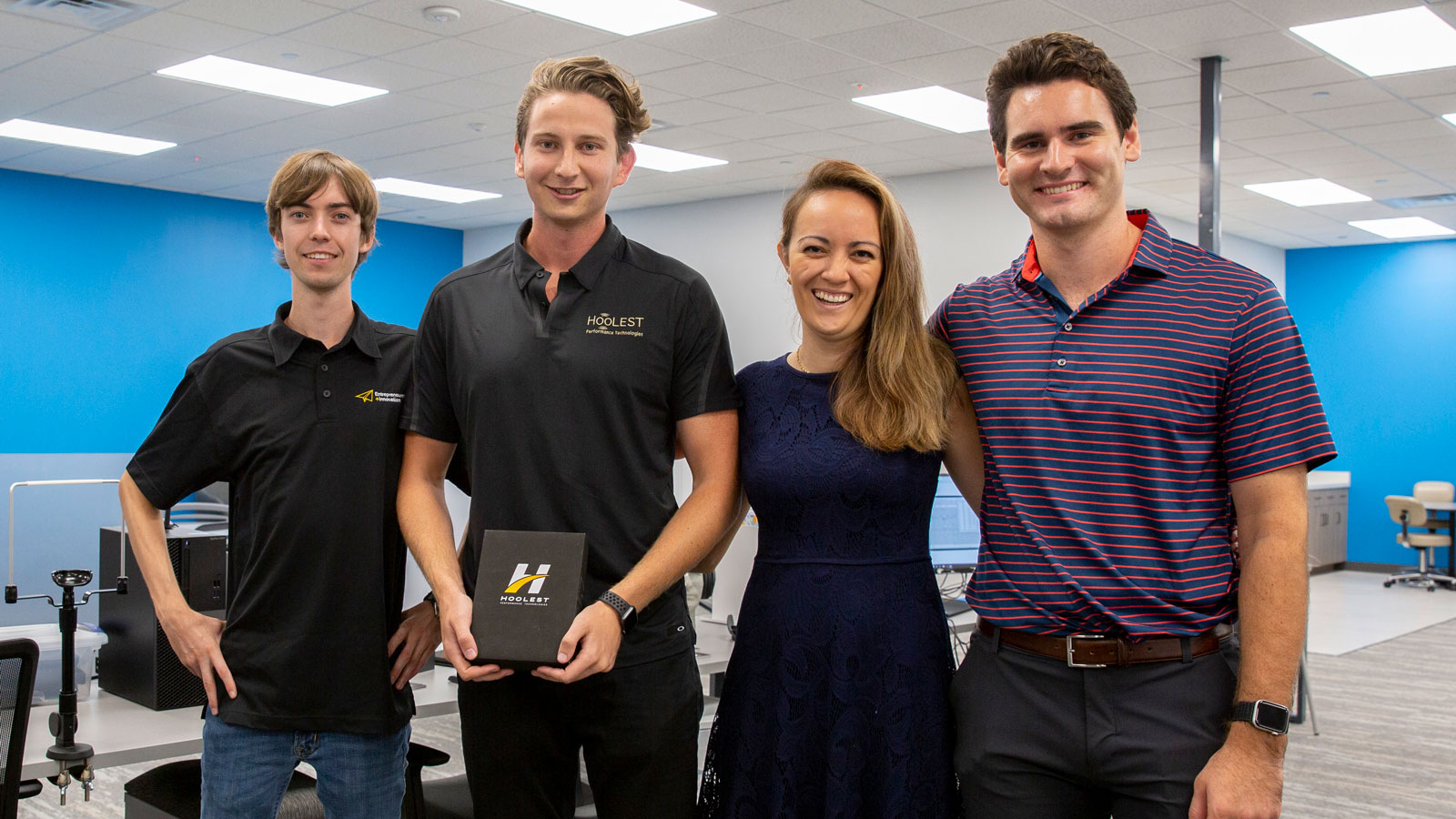
John Patterson, Nick Hool, ASU biomedical engineering alumna Andrea Carpenter and Hoolest Lead Designer and ASU industrial design and industrial and product design alumnus Luke Williams pose in the WearTech Applied Research Center during its grand opening in September 2019. The small team is making strides to help the community through use-inspired neuromodulation research and entrepreneurial skills. Photographer: Monique Clement/ASU
Entrepreneurship and tackling use-inspired research to serve the community are important tenets of the ASU and the Fulton Schools missions. Nick Hool and his small startup team at Hoolest Performance Technologies have excelled in these missions.
In addition to Hool’s entrepreneurship-focused doctoral program with Associate Professor Tyler, being involved in a startup has helped another graduate student enhance his engineering education.
John Patterson, an ASU electrical engineering graduate student studying power systems engineering, has been developing prototypes for Hoolest since the earliest days of the startup, sketching ideas for the right combination of voltage, current and frequency to make an effective nVNS device. Patterson’s education in the Fulton Schools has equipped him with the skills to make a difference with technology innovation.
“ASU has provided a great deal of insight into how to create well-engineered systems, those that are controlled, safe, economical and environmentally sustainable,” Patterson says. “The design of the Hoolest nVNS devices has been consistently driven with these principles in mind.”
The university is expanding entrepreneurial activities in wearable and medical technology in the Phoenix area through work at the WearTech Applied Research Center.
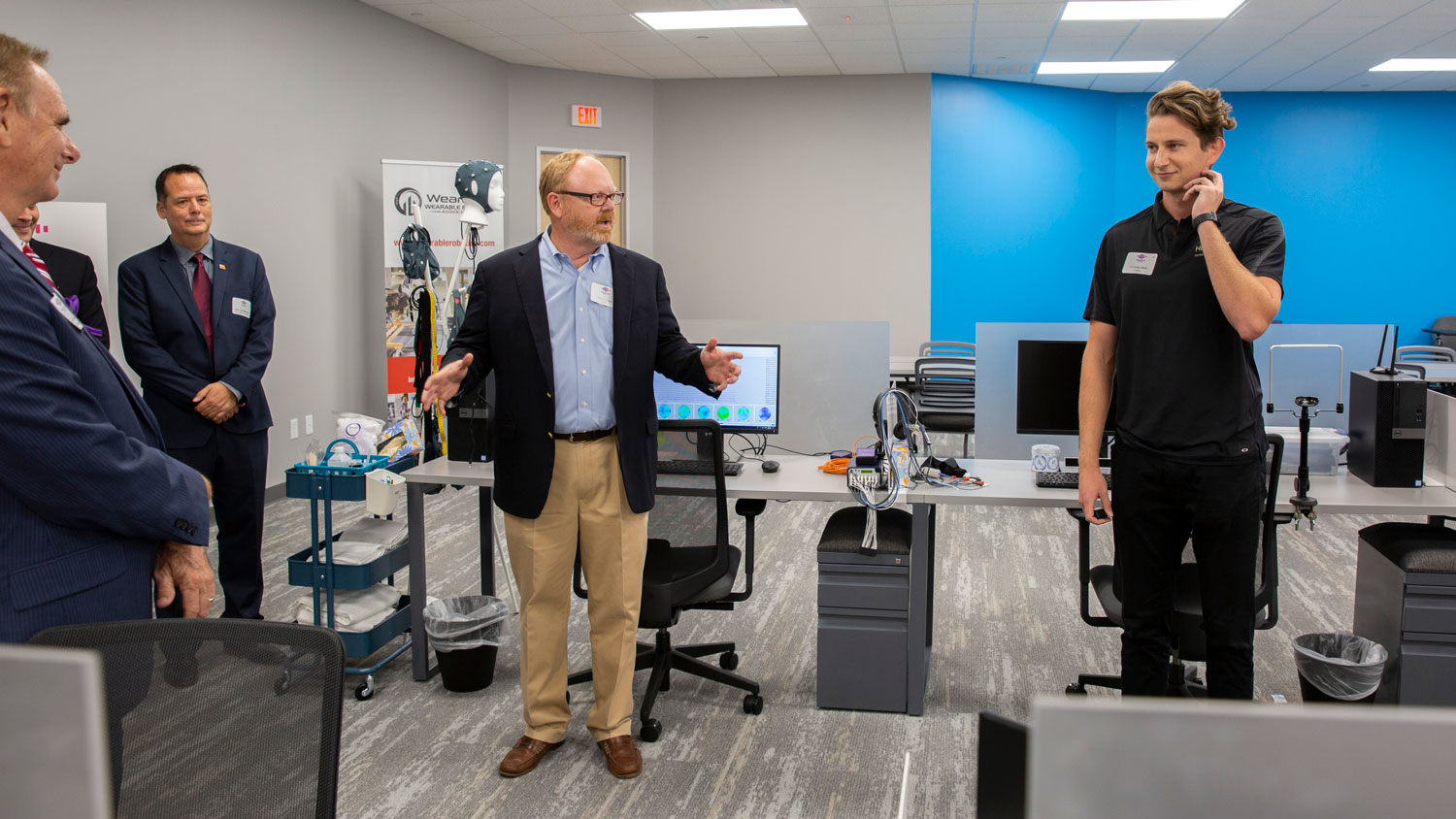
WearTech Applied Research Center Operations Director Wes Gullett (left) introduces Hoolest Performance Technologies to guests at a grand opening in September 2019 as Nick Hool demonstrates the technology. The space provides validation and prototyping lab space for companies to test devices, as well as direct access to expertise from Fulton Schools researchers for local startups. Photographer: Monique Clement/ASU
Hoolest was selected last year to be one of the first companies supported by WearTech as a promising ASU spinout.
“Hoolest is one of five companies currently redefining the experience of health and human performance at WearTech Applied Research Center, where our mission is to accelerate bringing breakthrough wearable solutions to market,” says Wes Gullett, operations director at WearTech.
“Nick and his team at Hoolest are building the first drug-free product poised to become FDA-cleared for immediate, acute anxiety relief. We are proud of Nick’s vision to create a product that can empower anyone to attain a drug-free solution, and the progress Hoolest has made since joining the WearTech Center.”
Patterson believes the combination of support from the ASU, the Fulton Schools and WearTech has been a crucial element to Hoolest’s success: a diverse network of innovators from whom they can draw knowledge and experience.
“The skilled entrepreneurs, engineers, makers and mentors we have met through WearTech and through startup competitions such as the ASU Innovation Open have been crucial in arming us with the business acumen and technical skills required to build up our medical device company,” Patterson says.
Learning the interdisciplinary skills needed to create a successful startup are the same that make applied research impactful for the community.
As Patterson learned about the range of applications the nVNS device could have — from treating acute anxiety to offsetting the need for aggressive drug-based therapies — he believed he was part of something that would serve a great mental health need in the both the local and global communities.
“With every adjustment and design improvement I made to the devices, I felt that I was one step closer to helping real people ease their symptoms, and that was a phenomenal motivator for my work,” Patterson says. “To me, Hoolest has been a force multiplier: a way for my design effort as an individual to directly improve the lives of everyone in need of treatment.”
Hool says it’s hard to describe his feelings about the progress Hoolest has made so far.
“When I first started out, it was just a dream and an idea. In school, we are often taught to dream big and pursue ambitious ideas, but we are rarely taught about the work, dedication and endurance it takes to actually pursue a big idea, and as a result I’ve never really seen any of my ideas come to life — until now,” Hool says. “Having a great team, a great mentor in Jamie and being part of Venture Devils helped me keep the momentum, and after years of hard work we actually had the device in our hand we had been dreaming of for years.”
He remembers the first time a person suffering from anxiety used the nVNS device and reacted by saying it was unlike anything he had ever used and could change millions of people’s lives.
“I thought he was just saying that to make me feel good. It did make me feel good, but since then I really have seen the impact on real people in our local community,” Hool says. “I don’t think there is a better feeling than seeing your efforts actually make a difference in someone’s life, whether it is building a nerve stimulation device or even just sitting and talking with someone. It is all one long process, but it has been the most rewarding process I’ve ever been part of.”
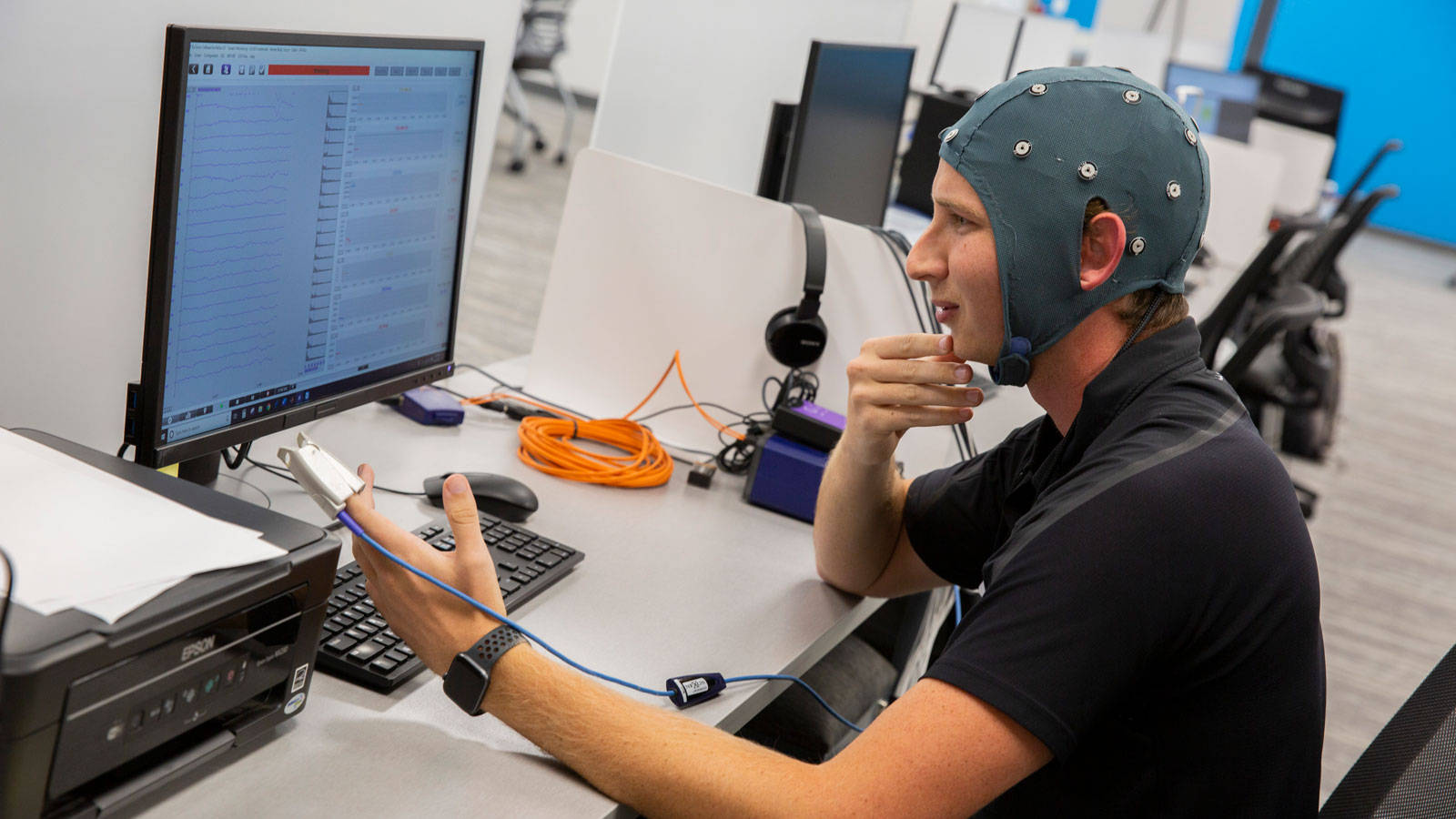
Nick Hool demonstrates the clinical study Hoolest uses to gather data about the investigational noninvasive vagus nerve stimulation device in the WearTech Applied Research Center. Years of study and data collection have gone into validating the device. Hool is now on the path to obtaining Food and Drug Administration clearance. Photographer: Monique Clement/ASU
Hoolest has continued to run clinical studies to gather data about the investigational device’s ability to improve human performance and alleviate severe anxiety. They’ve now started down the path toward Food and Drug Administration clearance for their nVNS device to relieve anxiety.
Since Hool and his team began the project, they wanted the device to be scientifically validated and based on clinical evidence.
“It takes a huge amount of time and resources to validate a medical device through clinical trials,” Hool says, “but we are making progress and expect to receive FDA clearance for our device soon.”
He sees a bright future for both Hoolest and the range of solutions for people seeking mental health aids other than medications like Prozac and Xanax.
“There are so many new technologies being developed today that interface with the brain and modulate its activity, and the big pharmaceutical companies are taking notice,” he says. “As the drug-free trend continues, I believe Hoolest will play a significant role in shaping the future of mental health treatment.”
Sign up for a clinical study on reducing anxiety symptoms
Hoolest is running a clinical study for people in the Phoenix metropolitan area who experience anxiety to try out Hoolest’s nVNS device. If you are interested in participating, sign up on Hoolest’s website for more information.






